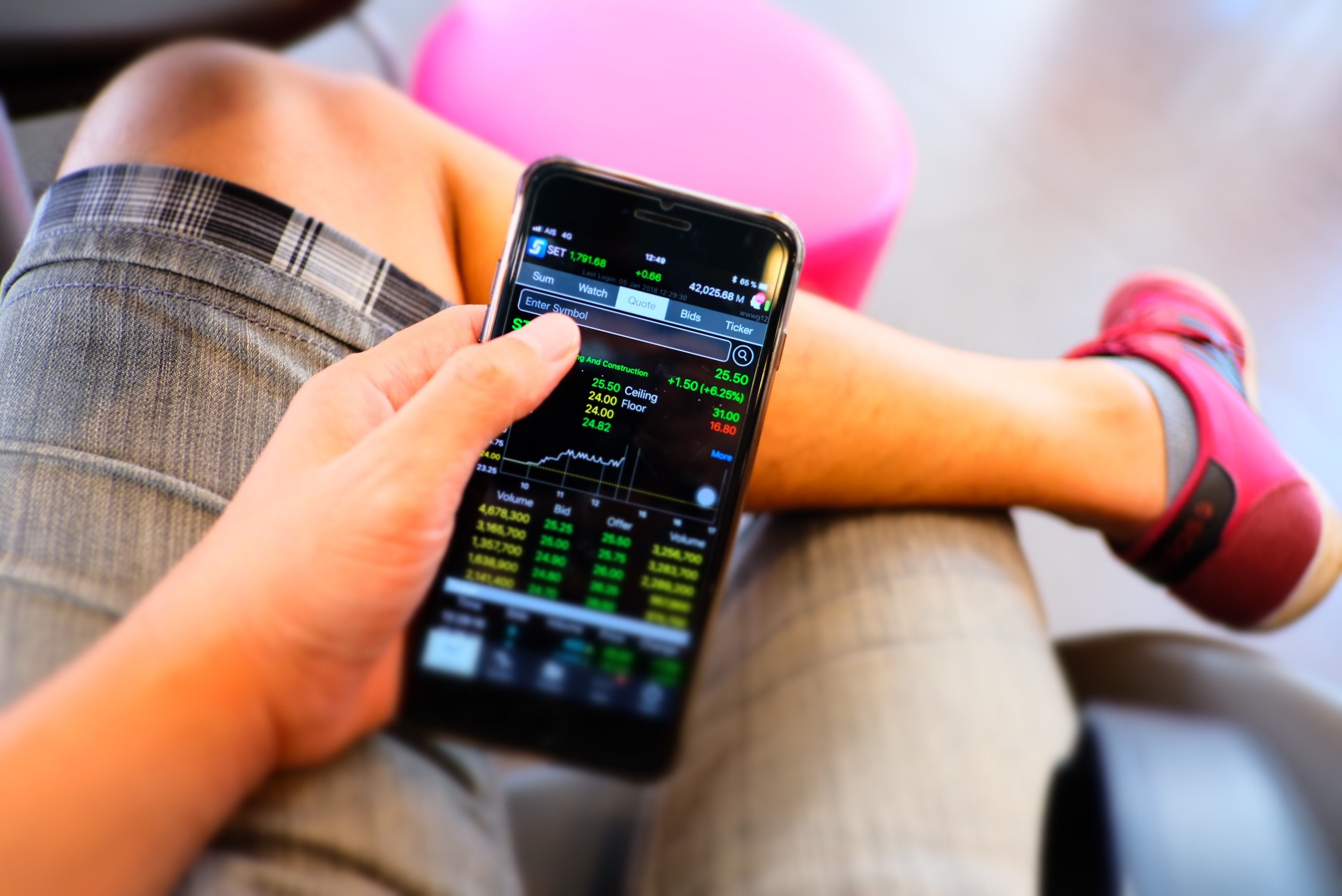What the Gurus Won’t Tell You About Day Trading

The Truth About Day Trading
The other day, an old friend of mine asked me an interesting question about day trading.
“Rob, you’ve worked on Wall Street trading desks, right? What advice would you give to someone thinking about getting started as a day trader?”
He’s not the only one thinking of breaking into the business, either. Mass layoffs, access to commission-free trading, and a dearth of sports betting has sparked a resurgence in the practice. Scores of investors have started flipping shares from their “e-Trade” and “Robinhood” accounts, trying to strike it rich in a booming stock market. It won’t end well for most of them.
Look: I’ll admit to being a little jealous of the day trading e-Twits and Robinhacks. Dave Portnoy, the pied piper of the millennial day trader revolution, has run circles around the old-fashioned Wall Street types. While most experts have advised caution, Portnoy has made fortunes betting on shares of airlines, restaurants, and cruise ships.
Others have cashed in too. In June, The New York Times wrote about 23-year old Sean Moore, who made a 60% return in one week betting on airline and casino stocks. (Source: “Trading Sportsbooks for Brokerages, Bored Bettors Wager on Stocks,” The New York Times, June 14, 2020.)
Two days earlier, Barron’s covered Ivan Jackson, a millennial trader who made a 26% return by taking stock tips over the social media app “TikTok.” (Source: “The Under-40 Set Discovers Day Trading,” Barron’s, June 12, 2020.
But when you dig into the data, you realize that day trading has never been a lucrative business. At least, when you look at the numbers in the aggregate.
A study published in Financial Analysts Journal found that only about a third of U.S. day traders between February 1998 and October 1999 made any money whatsoever. From that profitable group, most failed to earn a decent return after fees, taxes, and commissions. (Source: “The Profitability of Day Traders,” Financial Analysts Journal, last accessed July 20, 2020.)
And things have only gotten worse. A recent study in Taiwan found that only one percent of day traders earned a profit. A similar report in Brazil discovered that 97% of people who day traded for more than 300 days lost money, and only one percent earned more than the Brazilian minimum wage of $260.00 a month. (Source: “Day Trading for a Living?,” SSRN, June 11, 2020.)
No one to my knowledge has conducted a similar study recently of U.S. day traders. But my connections in the industry tell me the numbers look even worse.
Why? The stock market is rigged. Or at least, it’s structured in a way that stacks the odds against you.
The explanation for deteriorating returns comes from the rise of something called “high-frequency trading firms.” In plain English, these groups exploit advanced computer algorithms to make a large number of orders in a fraction of a second.
So, in the time it takes you to have a sip of coffee, a high-frequency shop can execute thousands, or even millions, of trades.
Author Michael Lewis outlined the problem with these outfits in his book Flash Boys. These insiders can move faster than you; they can see your order. Then they can play your trades against others in ways you don’t understand.
The biggest problem for the e-Twits and Robinhacks is a practice called “front running.” This means high-frequency trading firms see your order to buy or sell a given stock before it hits the exchange. That allows these outfits to jump in, grab some shares, and then sell them at a higher price.
For you and me, this amounts to a hidden “tax.” A report by The New York Times found that high-frequency traders made an average profit of $1.92 for every futures contract traded with institutional investors. That margin increased to an average of $3.49 when they traded against regular folks. (Source: “Has High Frequency Trading Ruined The Stock Market For The Rest Of Us?” Investopedia, June 25, 2019.)
Multiply those margins against millions of trades each day and you’re suddenly talking about a lot of money. According to the UK’s Financial Conduct Authority, high-frequency traders cost regular investors over $5.0 billion each year. Though other studies have put a higher figure on that estimate. (Source: “High-Speed Traders Cost Regular Investors Almost $5 Billion a Year, Study Says,” CNBC, January 27, 2020.)
But here’s where it gets really dodgy: your stockbroker is likely complicit in helping these high-frequency trading shops take your money.
High-frequency trading groups pay brokers millions of dollars to route our trades through their firms. The perfectly legal practice, called payment-for-order-flow, allows these groups to front-run retail investors. It also allows high-frequency traders to route orders in a way that’s advantageous to them. (Source: “Twitter Freaked Out Over Robinhood Selling Its Trade Flow. But the App — and Others — Have Been Doing It for Years.” Institutional Investor, June 15, 2020.)
It’s the financial equivalent of enrolling in the World Series of Poker and facing off against the best players in the world. And they can always see your cards.
Can this really be true? Of course, if you stop and think about it.
Retail stockbrokers have made headlines in recent years by offering “commission-free” trades to their clients. But these companies still need to keep the lights on somehow. Selling their order flow to high-frequency quant shops allows them to hide the real cost of their service from customers like you and me.
Politicians don’t care about this practice, either. The biggest high-frequency trading shops make millions of dollars in campaign contributions. You vote once every few years and post memes on Facebook. Which side do you think the folks in Washington will fight for?
Now, for us dividend investors, who generally don’t make frequent trades, this amounts to an inconvenience.
Each time we go to buy or sell a stock, the high-frequency trading outfits rip us off by a penny or two per share. A pain in the neck, no doubt, but over the years and decades that we typically hold onto an investment, this amounts to a rounding error.
And in fairness to brokers, this bargain with the devil might actually work out okay for us. Back in the old days, you’d have to pay “$200.00 and an eighth” every time you bought or sold a share of stock. Today, we pay a lot less.
But it’s a totally different picture for the e-Twits and Robinhacks.
If you day trade stocks, that penny or two per share represents your entire profit margin and then some. Each time you place an order, the high-frequency shops find little tricks to move your money into their pockets. And the more you trade, the faster you burn through your cash.
So what’s the bottom line on day trading?
The gurus on “YouTube” won’t tell you this. Your broker certainly won’t tell you this. But you need to understand you’re playing a rigged game.
If you want to day trade stocks during quarantine, knock your socks off. It’s a fun way for punters to pass the time until the NBA or NFL starts up again.
But if you really want to make money in the stock market, forget Dave Portnoy and his growing legion of “retail bros.” You won’t find much money in day trading unless you have a PhD and access to some pretty powerful computers.
For us regular Joes, it’s far more profitable (not to mention less stressful) to just buy wonderful, dividend-paying stocks and hold on for the long haul.











